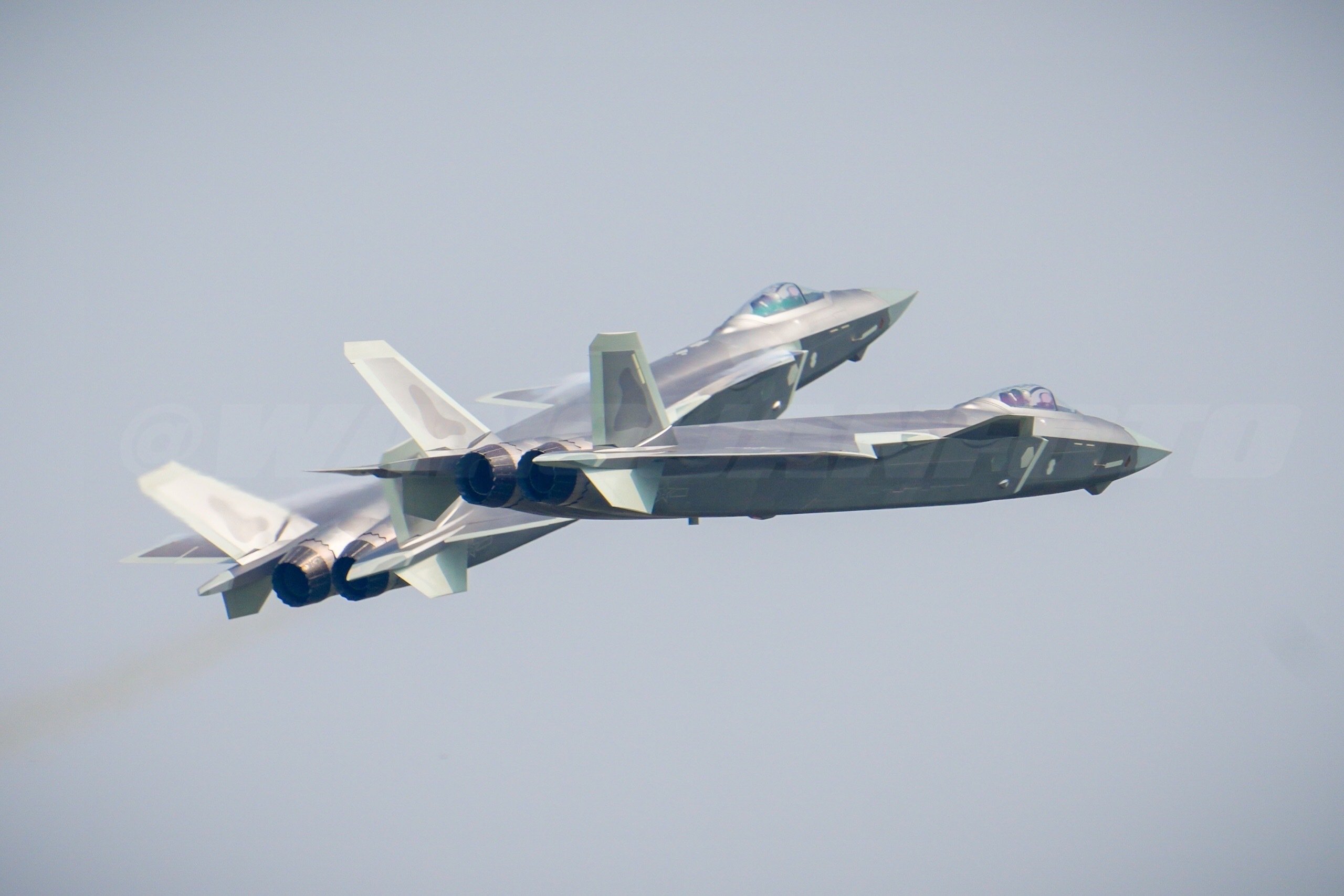China’s pride and joy, the J-20 ‘Mighty Dragon’, was spotted with what is believed to be the domestically made WS-10C engine at the Zhuhai airshow that kicked off on September 28.
‘Export Restrictions’: Why India’s HAL Tejas Fighter Jets, Despite No Customers, Face Foreign Sales Hurdle?
PLA Catching-Up! Why China’s J-16D EW Aircraft Presents ‘Big Challenge’ To India, Taiwan & Even The USA
This indicates a high degree of confidence among the country’s aerospace engineering community and the People’s Liberation Army Air Force (PLAAF). WS-10C is part of their concerted effort to initiate a clean break from Russian power plants.
Jet engines are an area where even the reverse-engineering expert Chinese have not been able to master, baring the sheer complexity and sophistication of the technology that countries guard so fanatically.
Of the five permanent members of the UN Security Council (UNSC), only the US, France, United Kingdom and France produce capable and reliable jet engines (both turbojets and turbofans) for commercial and military use.
Late last year, some J-20s began flying with the under-development WS-10C engine, an advancement over the WS-10A Taihang and WS-10B engines. The Taihang was based on the CFM-56 engine, where the core machine was derived from the latter.
Loaded With A Fighter Jet Engine, American Fire-Breathing Truck Surpassess Aircraft In A Drag Race — Watch

A part of an effort to eventually fully replace the Russian-made AL-31F turbofans, China’s journey towards developing a fully capable aero-engine has been rocky at best.
Worse, the Covid-19 pandemic halted work on the testing and developing the high thrust and super-cruise capable, yet heavily troubled WS-15 engine that is made to compete with the Pratt & Whitney F-119, which powers the US’s F-22 Raptor.
US Achieves Big Breakthrough In Hypersonic Missile Technology After Back-To-Back Failures
China Did It, Finally
The explosion of a WS-10A Taihang engine mid-flight in July 2004 unveiled the arduous road ahead for China towards self-reliance in aerospace engineering, becoming the only stain on China’s staggering rise as a technological powerhouse.
It began development in 1985. Since then, several modifications, experiments, and feedback from the PLAAF led to the WS-10B and finally the most refined WS-10C.
Work was even complicated by the Russian refusal to sell standalone AL-31F turbofans – knowing their Chinese friends’ penchant for reverse engineering and decoding intellectual property – offering additional Su-35 jets instead.
China had already paid $2.5 billion for 24 Su-35 fighters, the final units of which reached the PLAAF in 2018. This made any possible attempts to reverse engineer even more technically complicated and expensive. Problems persisted however as late as 2007 that included oil leakage, shedding turbine blades, and smokes through the nozzles.
However, the J-20 spotted at Zhuhai with the WS-10C engine is not the J-20B, which only entered mass production in July 2020 when the Chengdu Aircraft Corporation added a fourth production line. The new line can produce at least one J-20 aircraft a month. The newer J-10B variant will continue to be powered by Russian engines since the WS-10C will take at least another year to finish testing.
India’s ‘White Elephant’: Why Is Indian Army Acquiring Bulky Arjun Tanks That It Keeps Rejecing?
The PLAAF, unsatisfied with the WS-15, first asked for the WS-10B in 2017, since the former too had an accident similar to the WS-10A Taihang. In 2015, a WS-15 being tested on the ground had exploded.
The cause was found to be the single-crystal turbine blades, which owing to quality control issues, have been found to be unable to handle the searing temperatures that the high thrust engine produces. It consequently failed the final evaluation in 2019.
During the J-20A's aerial display today, they showed two WS-10C powered ones and even if the display was nothing special and in terms of aerobatics – as expected – far from dramatic or even spectacular – the important part IMO is, they showed J-20As with indigenous engines. pic.twitter.com/LqdDTIP3Nx
— @Rupprecht_A (@RupprechtDeino) September 28, 2021
The J-20 began deployment in 2017, ahead of schedule since tensions with the US under then-President Donald Trump had stoked fears of a sudden conflict with Washington. Back then, it was powered by the WS-10B.
Moreover, the US had begun deploying F-35 stealth fighters to Asia-Pacific. The PLAAN’s satisfaction with the WS-10C performance has now led to it being installed on some J-20 units as a part of the development and testing phase until the final nod for mass production.
The WS-10C produces better thrust than the AL-31F turbofans, has improved afterburners, and is Full Authority Digital Engine Control (FADEC) capable. The J-10C and the under-development WS-15 now remain China’s only option since mass-producing the J-20 would not be possible without the possession of a capable power plant.
Missing In Action: Rafale Fighter Jets ‘Conspicuously Absent’ From Kashmir Airshow; Experts Decode The Reason
However, with the US planning to field a sixth-generation fighter in a decade, fears are rife in the PLAAF leadership about the WS-15 not being able to shorten its development phase. This would force even the newer J-20 variants to remain powered by the WS-10C, which would not allow optimal aerodynamic performance.
The WS-10C and the AL-31F turbofans would therefore remain only stop-gap arrangements for China’s stealth fighters.
- Parth Satam is a Mumbai-based journalist who has been covering India’s defense sector for more than a decade. He maintains a keen interest in defense, aerospace and foreign affairs and can be reached at satamp@gmail.com
- Follow EurAsian Times on Google News